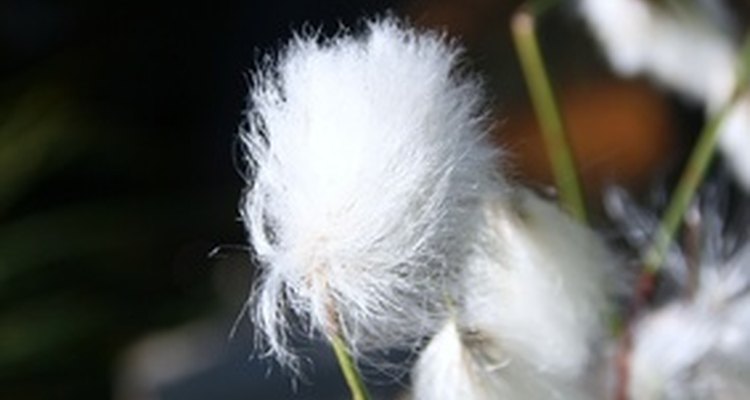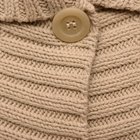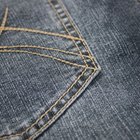
Cotton and permanent press fabrics may not look that different at first glance, but there are several differences that have an impact on wear, care and overall durability. The most basic difference is that cotton is a natural fiber and permanent press fabrics are man-made synthetics. Permanent press fabrics were invented to compensate for the maintenance required of cotton fabrics.
Descriptions
Cotton is a natural fiber made from the cotton plant. Permanent press fabrics are made with a combination of synthetic materials blended with cotton or rayon. The term “permanent press” refers to a curing process applied to the fabric to strengthen the material and reduce wrinkling. The curing process involves treating the fibers or material with chemicals, such as formaldehyde, and then baking the chemicals into the fabric. Pure cotton fabric cannot handle the heat and chemicals required to achieve the wrinkle-free results.
Wrinkling
The biggest difference between cotton and permanent press is the issue of wrinkling. The term “permanent press” literally means that the fabric is permanently pressed and therefore will never require ironing. Cotton on the other hand, is very prone to wrinkling. Moving at all in a 100 percent cotton garment will result in wrinkles appearing where the fabric has bent at the knees, elbows, waist, etc.
Fading
Formaldehyde resins added to cotton blends to produce the wrinkle-free permanent press fabrics also serve to preserve color against fading. The dyes in cotton fabric will fade from exposure to high temperatures in washing machines and dryers and under direct sunlight. Permanent press fabric, however, is much less likely to fade.
Shrinking
High heat also causes cotton to shrink. The fibers in cotton tighten up under the heat and are not resilient enough to stretch back out again. Permanent press fabrics will not shrink because the resins added to the fabrics keep the fibers resistant to shrinkage.
Durability
The resins applied in the curing process to create permanent press fabrics actually strengthen the fibers. Therefore, permanent press fabrics are significantly stronger than cotton and will endure much more wear and tear before showing signs of aging. Cotton edges can fray. Cotton garments will eventually wear thin and can rip easily once they become weak.
Care and Maintenance
Permanent press fabrics can be washed in any temperature and can be tossed in the dryer even under high heat. You never have to iron permanent press fabrics so the care and maintenance is minimal and very easy. The biggest problem with permanent press fabric is the removal of stains. Due to the resins and other chemicals, the fibers grab onto stains and do not easily release them. Many permanent press fabrics are also stain retardant, but not stain resistant. Cotton on the other hand, requires that you wash it in cold water and, for best results, line dry. Then you need to iron it. Stains can fairly easily be removed from cotton, but should not be scrubbed at vigorously.
Related Articles

The Care of Plisse Fabric

What Is Cotton Plisse?

How to Restore Stiff Cotton Sweaters

Microfiber vs. Cotton Clothes

How Is Poly Cotton Made?

How to Keep Cotton Pants From Shrinking

The Difference Between Wrinkle-Free & ...

What Is Pinpoint Cotton?

How to Remove Wrinkles From Polyester ...

How to Shrink Cotton

How to Fix Holes in Cotton Shirts

Description and Characteristics of ...

How to Press Chiffon

Can You Iron Acetate Fabric?

How to Lengthen Dress Coat Sleeves

How to Avoid Stretching out Acrylic ...

What Is the Difference Between Acrylic ...

How to Shrink 100 Percent Cotton Brief ...

How to Get Tanning Lotion Stains Out of ...

How to Use a Steam Press
References
Writer Bio
River Lin is an independent writer and consultant. With a Master's degree in teaching English as a second language from Ball State University. She lived in Japan for 15 years teaching and editing. Now based in the US, she works for a variety of clients. Published work can be found in print and online at various websites and goarticles.com.
Photo Credits
cotton image by arklite06 from Fotolia.com